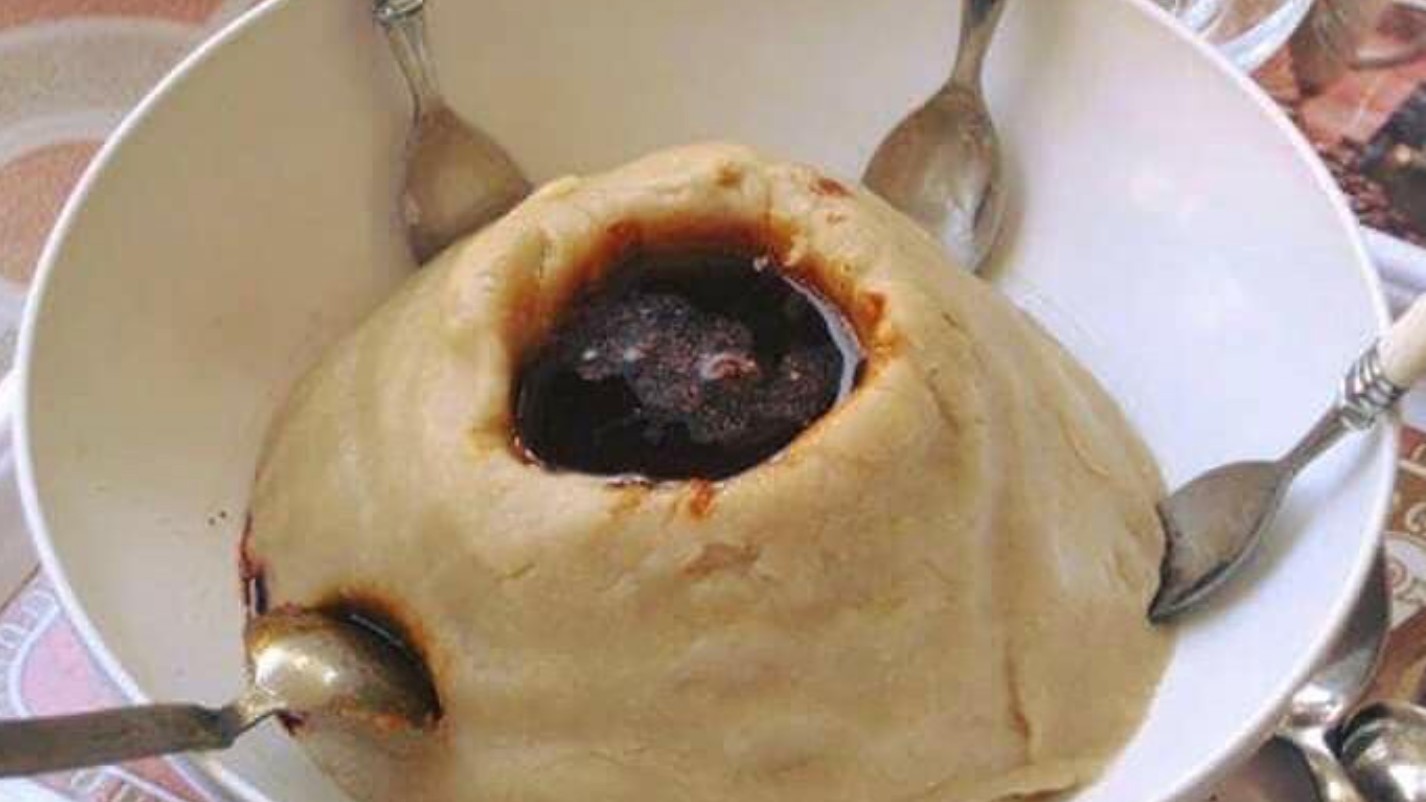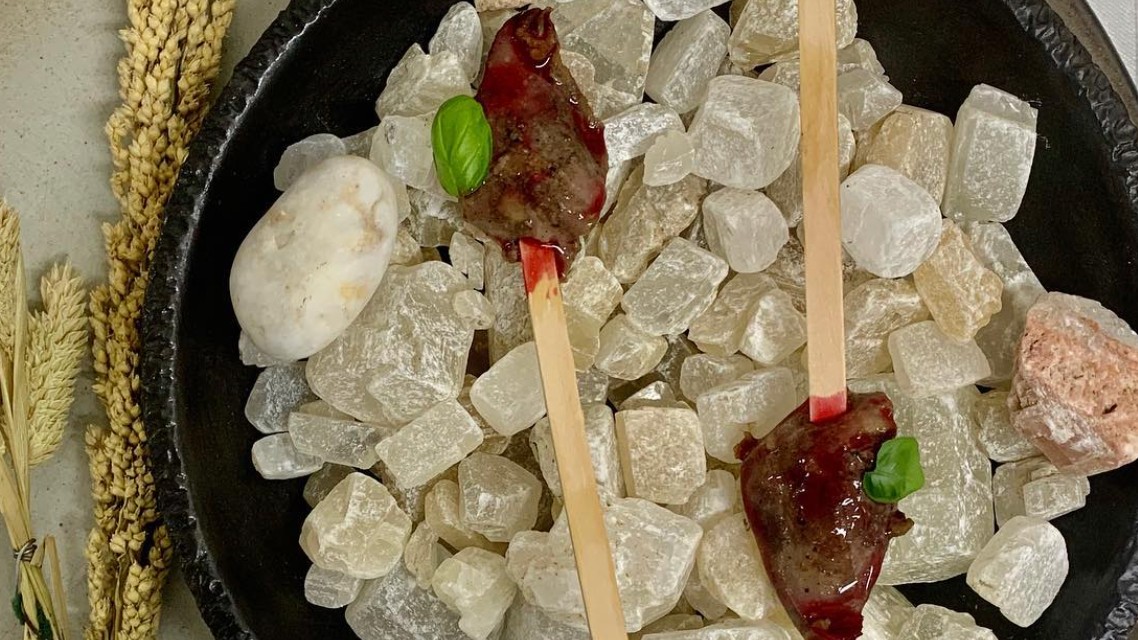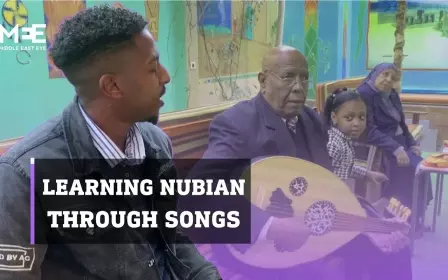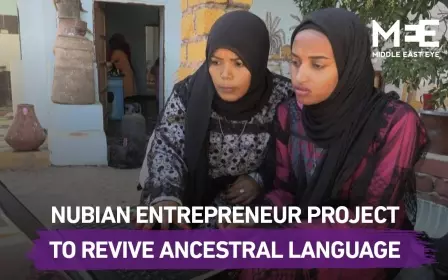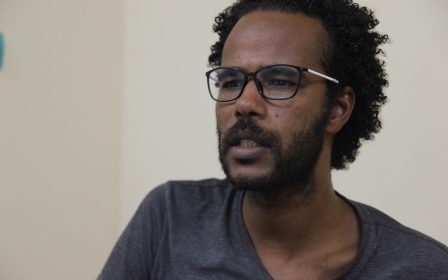Rescuing Nubian recipes in Egypt from the brink of extinction
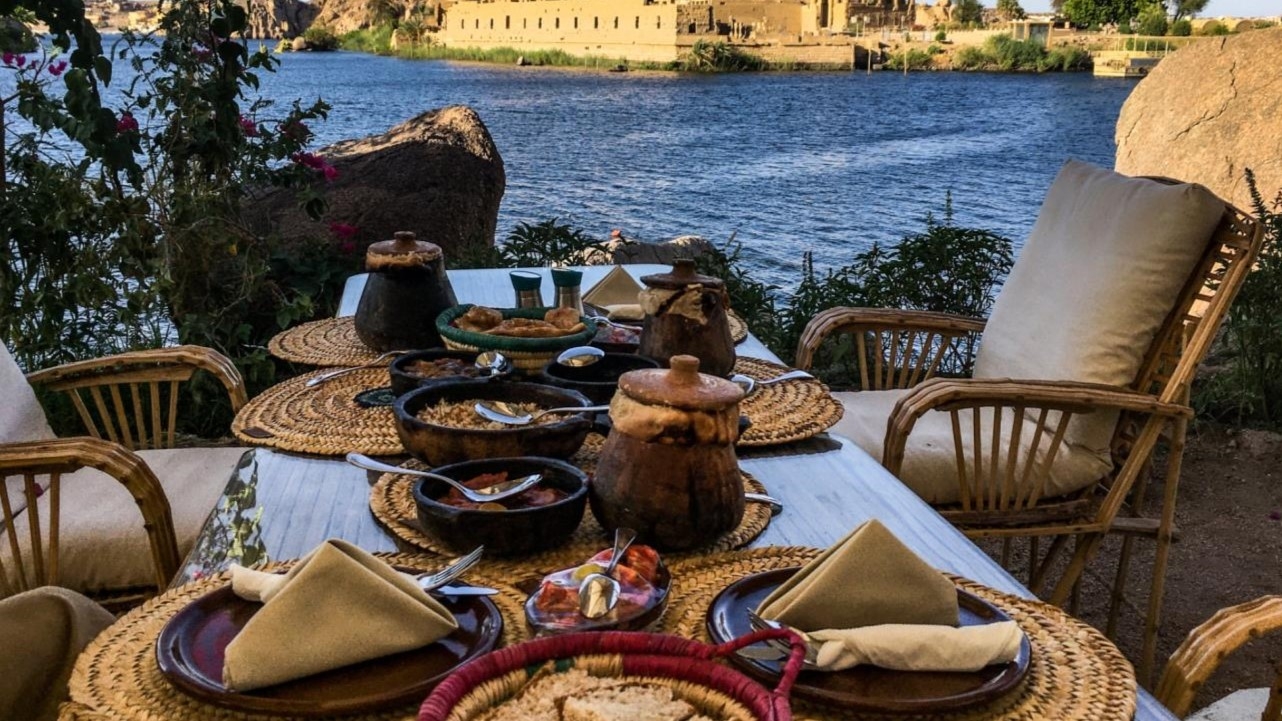
Mohamed Kamal painstakingly recreates recipes he watched his grandmother make in his homeland of Nubia.
Today, the Nubian-Egyptian chef, who specialises in modern Nubian cuisine, uses his social media platform to champion recipes that were once popular but are now almost extinct.
For him, food allows us to celebrate the past and the stories of our ancestors.
In Egypt, recipes that have been passed down from generation to generation are dying out as traditional ingredients are no longer available and in some instances, the knowledge is being lost forever.
Food for Egyptians, like in most cultures, is central to their daily life. It’s not only seen as a form of sustenance, but also something that brings people together in social settings, is used to comfort people during times of difficulty, and also enables them to express creativity.
New MEE newsletter: Jerusalem Dispatch
Sign up to get the latest insights and analysis on Israel-Palestine, alongside Turkey Unpacked and other MEE newsletters
Today, a number of cultural campaigners and independent restaurants are working hard to preserve Egypt’s rich food heritage.
Magda Mehdawy, author of My Egyptian Grandmother's Kitchen, says that those working to preserve Egyptian cuisine have an important role, as it forms a key part of the country’s culture, particularly as many crops and ingredients have been lost in Egypt over the years.
“Food is a very important aspect of any culture, hence the preservation of authentic Egyptian cuisine helps with keeping our Egyptian identity from being lost,” she told Middle East Eye.
'What's so beautiful about food is it touches upon everything around us; politics, economics and our awareness of the world'
- Mennat-Allah Dorry, food historian
In the past 70 years, Egypt’s population has increased from 21 million in 1950 to 112 million today, and the nation’s culinary scene has evolved to mirror this social upheaval.
In response to the population boom during the latter half of the 20th century, Egypt’s government implemented irreversible agricultural reforms to feed its citizens, and with intensive farming came the decline of many traditional crops like tiger nuts, purslane and sycamore figs.
Subsequent environmental changes such as soil erosion, over-farming and overuse of chemicals have reduced biodiversity, and Egypt now loses around five acres of land to desertification every hour, making arable farmland scarcer.
Italian gastronomic preservation group Fondazione Slow Food identified around 36 different crops, recipes and livestock in Egypt which may become extinct within generations.
On a social level, urban migration caused Egyptian cuisine to become more homogeneous, and fast food has been widely adopted due to socio-economic shifts.
Egyptian food historian and archaeobotanist Mennat-Allah El Dorry says that food is important to all communities.
“Food plays a role in every single aspect of our lives. What's so beautiful about food is it touches upon everything around us: politics, economics and our awareness of the world,” she told Middle East Eye.
Traditional heritage recipes
Recipes are dying across all of Egypt, but most prominently in rural, less-economically developed areas such as Nubia and Sinai, which are more exposed to the effects of climate and social change.
The region of Nubia underwent a significant transformation in the 1960s as the building of the High Dam in Aswan meant that around 50,000 Nubians were displaced from their fertile homelands, and elements of their heritage were lost forever.
Today, more people are keen on documenting and preserving Nubian foods, However, cooking the dishes is not quite so straightforward.
When Ahmed Yehia, the founder of one of Egypt’s first ecolodges, developed a sustainable eco hotel and restaurant, he faced opposition from his local staff who couldn’t believe that people outside of Nubia would want to eat the traditional cuisine.
Another obstacle was finding the tools to make the traditional food. In the past, everything was cooked in pottery, whereas today, most chefs use metal tools.
Yehia's team was eventually able to track down a potter, and explain to him what they envisaged, enabling them to use traditional techniques when preparing meals.
Nubian foods dying out
Kamal explained that Nubian food is far deeper than just a meal to carry you through the day; it reflects stories and traditions.
One of his favourite recipes, which is rare to come across today, is a dish called "nolo madid", classically prepared before weddings.
Nolo madid is a simple porridge-like dish made of wheat flour, ghee and water with options to add milk or black molasses. Traditionally, families would prepare nolo madid at home, then take it to the river bank to enjoy, and the soon-to-be bride and groom would wash the dishes in the Nile.
Among the other dishes dying out is Matrouh kishk, a savoury-style pudding. The Matrouh Bedouins live along the north coast, west of Alexandria, and have farmed sheep on fertile land for hundreds of years. Over time they have developed their own variation of kishk.
To make it, they take milk from the sheep, ferment it overnight or for a few days, then churn the milk vigorously, and strain the buttermilk. The buttermilk, called jameed, is mixed with barley, rolled into balls, and placed in containers to dry.
The process takes around five days in the summer and up to two weeks in the winter. Due to lack of access to grazing land and additional costs, the Matrouh Bedouin typically use shop-bought milk and their kishk is losing its uniqueness.
In the Sinai Peninsula in the north-east of Egypt, the local Bedouin tribes have been making Farasheesh bread for generations, using simple ingredients of water, flour and salt taken from either seawater or the branches of a desert plant.
Farasheesh is becoming increasingly rare due to government subsidies ensuring the supply of bread or flour. The subsidies mean less people are incentivised to plant the wheat used to make Farasheesh, both in the desert and rural areas.
The result is that many local wheat varieties and local traditions tied to the cultivation and production of traditional bread are disappearing.
Preserving recipes
Today, people are taking it upon themselves to preserve traditional Egyptian recipes.
While it may not be possible to do so in their pure form, individuals such as Kamal, Yehia and Mehdawy are working hard to pass on the stories and heritage behind the dishes and the ingredients.
Kamal pulls inspiration from his grandmother’s style of cooking and blends it with his slightly more modern techniques.
Mehdawy has chosen to document the recipes her grandmother would make in her new book titled My Grandmother’s Kitchen.
Yehia has chosen to showcase Nubian food to tourists and to people who may not have heard about it before.
For El Dorry, preserving these dishes and allowing them to take new twists allows for exciting variations and enriches a community’s heritage even more.
“If we succeeded in entirely preserving history, we would never experience change, or the wonderful morphing of dishes like Koshari,” the food historian says.
Middle East Eye delivers independent and unrivalled coverage and analysis of the Middle East, North Africa and beyond. To learn more about republishing this content and the associated fees, please fill out this form. More about MEE can be found here.



